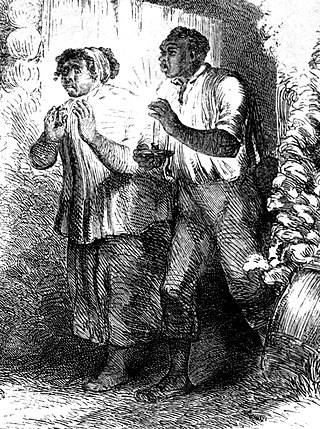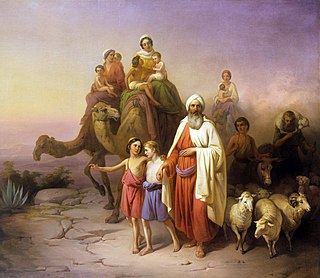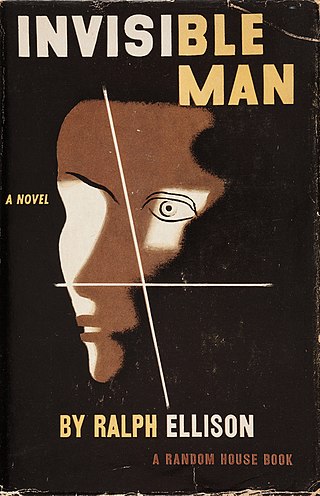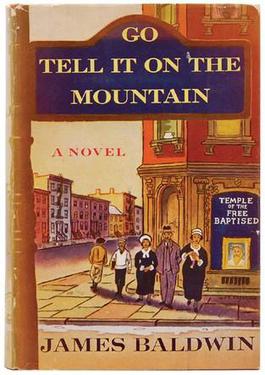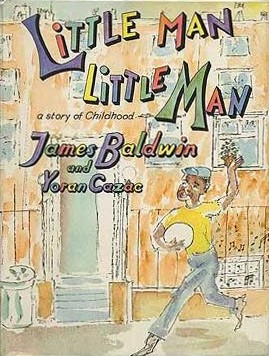Plot
"Sonny's Blues" is a story written in the first-person singular narrative style. Much of the story is told through a series of flashbacks as memory and family history are revealed to be central drivers of the trauma and alienation experienced by Sonny and the Narrator.
The story opens with the unnamed narrator reading about a heroin bust resulting in the arrest of a man named Sonny, his brother. The narrator goes about his day as an algebra teacher at a high school in Harlem, but begins to ponder Sonny's fate and worry about the boys in his class. After school, he meets a friend of Sonny, who laments Sonny will struggle with addiction even after his detox and release.
After the narrator's daughter Grace dies of polio, he finally reaches out to Sonny. The narrator remembers leaving for the war, leaving Sonny with his wife Isabel and her parents. Sonny decides to play the piano, and his passion is obsessive. Once Isabel's parents find out that Sonny has not been attending school, he leaves their house, drops out of school, and joins the Navy.
Sonny returns from the war. Their relationship sours, as the narrator intermittently fights with Sonny.
Back in the present, the narrator reveals that Grace's death has caused him to reflect on his role as an older brother, surmising that his absence impaired Sonny's personal growth. The narrator resolves to reconcile with Sonny.
While Isabel takes her children to see their grandparents, the narrator contemplates searching Sonny's room. He changes his mind, however, when he sees Sonny in a revival meeting in the street below his apartment, where a woman sings with a tambourine alongside her brother and sister, and enraptures the audience.
Some time later, Sonny invites the narrator to watch him play in Greenwich Village. The narrator begrudgingly agrees to go. Sonny explains his heroin addiction in vague analogies. The woman's performance reminded him of the rush he got using heroin, equating it to a need to feel in control. The narrator asks Sonny if he has to feel like that to play. Sonny answers that some people do. The narrator then asks Sonny if it is worth killing himself just to try to escape suffering. Sonny replies that he will not die faster than anyone else trying not to suffer. Sonny reveals that the reason he wanted to leave Harlem was to escape the drugs.
The brothers go to the jazz club in Greenwich Village. The narrator realizes how revered Sonny is there as he hears him play. In the beginning, Sonny falters, as he has not played for over a year, but his playing eventually proves to be brilliant and he wins over the narrator and everyone in the club. The narrator sends a cup of Scotch and milk up to the piano for Sonny and the two share a brief moment of bonding. The narrator finally understands it is through music that Sonny is able to turn his suffering into something worthwhile.
But the story ends with an ominous symbol: the Cup of Trembling, which leaves readers suspecting that the brothers will continue to face challenges in spite of this moment of harmony.
Symbolism
Darkness and Light: Throughout “Sonny’s Blues”, there is a tension between light and darkness. Baldwin uses darkness to describe the adversity that the characters go through.
“All [the youth] really knew were two darknesses, the darkness of their lives, which was now closing in on them, and the darkness of the movies, which had blinded them to that other darkness…” (Baldwin 1)
Baldwin uses darkness to convey the suffering that the youth in Harlem are fated to go through. Although they are not suffering yet, the seeds of their future have already been sown, and the darkness of their lives is already closing in on them.
“And when light fills the room, the child is filled with darkness. He knows that every time this happens he's moved just a little closer to that darkness outside. The darkness outside is what the old folks have been talking about. It's what they've come from. It's what they endure. The child knows that they won't talk any more because if he knows too much about what's happened to them, he'll know too much too soon, about what's going to happen to him.” (Baldwin 9)
Similarly to the previous quote, Baldwin uses darkness to describe the suffering that the children in Harlem are fated to go through. The children have seen the darkness that the adults have endured, and they feel worried about the suffering that they will have to endure.
“[Your father] says he never in his life seen anything as dark as that road after the lights of that car had gone away. Weren't nothing, weren't nobody on that road, just your Daddy and his brother and that busted guitar.” (Baldwin 10)
Baldwin uses darkness to reveal the depth of suffering that Baldwin’s father must have gone through after he witnessed the death of his brother, as he says that “he had never seen anything as dark as that road.” Baldwin uses acknowledges that suffering is constant and deep.
Overall, Baldwin uses darkness in “Sonny’s Blues” to convey the profusion and depth of suffering. In contrast, Baldwin uses light to describe hope and salvation, in opposition to the darkness.
“[The band] horsed around, standing just below the bandstand. The light from the bandstand spilled just a little short of them and watching them laughing and gesturing and moving about, I had the feeling that they… were being most careful not to step into that circle of light; if they moved into the light too suddenly, they would perish in flame” (Baldwin 23)
Baldwin uses light to represent that although hope is present, it is still scarce, “just a little short of them.” The band members are skeptical of light, and if they moved into the light too quickly “they would perish in flame.” Baldwin also mentions the light while showing the characters experiencing happiness.
“For, while the tale of how we suffer, and how we are delighted, and how we may triumph is never new, it always must be heard. There isn't any other tale to tell, it's the only light we've got in all this darkness.” (Baldwin 24)
Baldwin propounds that light can be discovered, or reached, through self-expression. Again, light is mentioned in the context of hope or happiness.
In conclusion, darkness and light are in constant tension throughout “Sonny’s Blues”, and they represent the prevalence and extent of suffering and the existence of salvation and hope, respectively.
The Cup of Trembling: The Cup of Trembling is mentioned at the end of the story, when Sonny is performing; the cup symbol is borrowed from the Bible. Sonny’s drinking from the cup of trembling serves as a reminder of the suffering he has endured, but also offers him a chance for redemption and salvation. As a musician, Sonny takes all his suffering and that of those around him and transforms it into something beautiful; his suffering is almost a consequence of him being a musician. It’s a final recognition of the tension of light and darkness, and how in the presence of suffering, there is still room for salvation and redemption. “He didn't seem to notice it, but just before they started playing again, he sipped from it and looked toward me, and nodded. Then he put it back on top of the piano. For me, then, as they began to play again, it glowed and shook above my brother's head like the very cup of trembling.” (Page 25)
Housing Projects: The housing projects represent the oppression that African Americans in Harlem faced. Although they are built with good intentions, they are inevitably transformed into what the builders were trying to fix, and there is no attempt to correct such transformation. It sort of becomes a “parody of good.” It’s a representation of the ever-present societal oppression that African Americans in Harlem faced. “These streets hadn't changed, though housing projects jutted up out of them now like rocks in the middle of a boiling sea. Most of the houses in which we had grown up had vanished… ut houses exactly like the houses of our past yet dominated the landscape, boys exactly like the boys we once had been found themselves smothering in these houses, came down into the streets for light and air and found themselves encircled by disaster. Some escaped the trap, most didn't. Those who got out always left something of themselves behind” (Page 7)
Themes
The Prevalence of Tragic Optimism: Through the aforementioned symbol of light and darkness, Baldwin conveys his message of tragic optimism. Tragic optimism is the ability to remain optimistic, even in the face of immense suffering. It’s important to note that Baldwin mentions darkness often, yet only refers to light occasionally. This shows that even in the presence of overwhelming darkness, and profuse amounts of suffering, there is still room for light and hope. Baldwin’s message of tragic optimism in “Sonny’s Blues” is commonplace in his other works, and he is known as one of the mainstream tragic optimists, alongside the likes of Viktor Frankl.
The Obligation Toward Brotherly Love: The entire story revolves around the relationship between the narrator and his brother Sonny. Before the narrator’s mother dies, she bestows him the role of Sonny’s keeper; she tells the narrator to watch over Sonny, and to “let him know that [he’s] there.” Later in the story, Sonny reminds the narrator that although he is clean from drug abuse, his problems are far from over, and the narrator makes a silent promise to himself to always be there for his brother.
Music as a Form of Expression: The theme of music as a form of expression is mainly conveyed through Sonny. Music, and jazz, are described as Sonny’s salvation, and his light in all the darkness. As he starts to play his music again, and finally gets to express his suffering through his music, others are also touched by his music.
The Limited Opportunities for African Americans in Harlem: Through the symbol of the housing projects and the overall descriptions of the setting, Baldwin provided a social commentary on the generational oppression of African Americans, and the limited opportunities that they get as a result of such oppression. The poverty that exists in the community is constantly conveyed, and this connects constantly to feelings of hopelessness and desolation. Even for the youth, the seeds of their future have already been sown, and they are all fated to suffer.
